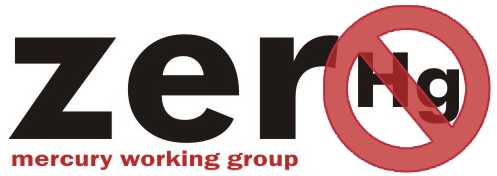Due to its unique chemical properties, mercury has been used in a wide range of products over the years, but currently most of it is used in electrical and electronic devices, switches (including certain thermostats) and relays, measuring and control equipment, energy-efficient fluorescent light bulbs, batteries and dental amalgam.
Smaller amounts of mercury are used in some laboratory equipment and in some cosmetics, pharmaceuticals, paints and jewelry.
There are mercury-free alternatives to most products containing and processes using mercury and are now available in an increasing number of countries.
Mercury and mercury compounds cannot be destroyed, but only contained so that they do not circulate in the environment, endangering human beings and wildlife. When products containing mercury are discarded into the general waste stream, the mercury pollutes the environment – in waterways, wetlands, and the air – and endangers people both locally and globally.
Examples of uses of mercury, in products, in alphabetical order, include:
- As a metal (among others) in:
- Dental amalgam fillings
- Electrical and electronic switches and thermostats
- Lamps (e.g. fluorescent, discharge - streetlights and some automobile headlights)
- Measuring devices (e.g. thermometers, blood pressure gauges, barometers)
- As a chemical compound (among others) in:
-
- Batteries (e.g. mercury oxide batteries, button cells)
- Biocides/fungicides in paper industry, paints and on seed grain
- Soaps and creams (as a bactericide and/or whitening agent)
- Vaccines (as preservative in form of ethylmercury in thimerosal)
- Pharmaceutical antiseptics
- Laboratory analysis reactants
- Pigments and dyes (may be historical)
- Detergents (may be historical)
- Explosives (may be historical)
Relevant information on mercury uses in products can be found among others in the UNEP Global Mercury Assessment (2002) and in the COWI/Concorde (2008) reports.
Toolbox
- Guide and Checklist for Phasing out Mercury added Products under the Minamata Convention, FR, ES, December 2017.
- Checklist towards phasing out mercury added products, May 2017
- Questionnaires that could be used in view of assessing the national market transition towards Convention compliant products
- Studies on the national market transition towards Convention compliant products
- Draft laws prepared for Nigeria and Mauritius on the basis of legal gap analysis
- Guide to checklist of Minamata Convention on mercury obligations which may require new legal authorities, in FR and in ES
- Training Module - Products, Processes, and Exemptions (PPT)
- Minamata Convention on Mercury - Ratification and Implementation Manual (last update on January 2018), in FR and in ES
- In May 2017 an African regional conference took place in Nairobi to present the outcomes of the project - see also our African Regional Conferences, Nairobi, 22-26 May 2017 - blog
- EXECUTIVE SUMMARY EEB/ZMWG AFRICAN REGIONAL CONFERENCE ON PHAISING OUT MERCURY ADDED PRODUCTS
- RESUME EEB/ZMWG CONFERENCE REGIONAL AFIRCAINE VISANT L L ELIMINATION PROGRESSIVE DES PRODUITS AVEC DU MERCURE AJOUTE
- RESUMEN EEB/ZMWG CONFERENCIA REGIONAL PARA ELIMINACION PROGRESIVA DE PRODUCTOS CON MERCURIO ANADIDO











